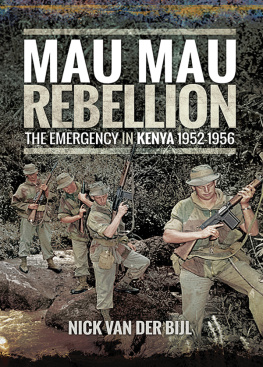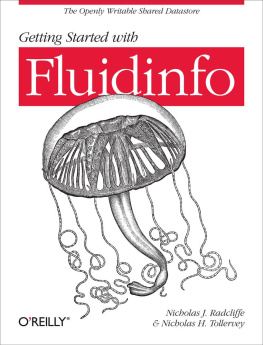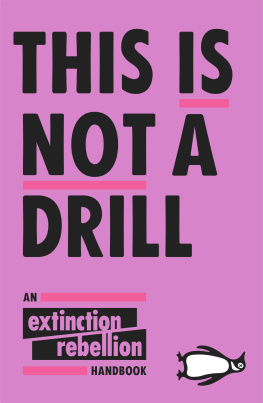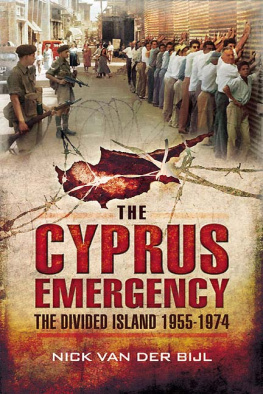Nicholas van der Bijl - Mau Mau Rebellion
Here you can read online Nicholas van der Bijl - Mau Mau Rebellion full text of the book (entire story) in english for free. Download pdf and epub, get meaning, cover and reviews about this ebook. year: 2017, publisher: Pen and Sword, genre: Home and family. Description of the work, (preface) as well as reviews are available. Best literature library LitArk.com created for fans of good reading and offers a wide selection of genres:
Romance novel
Science fiction
Adventure
Detective
Science
History
Home and family
Prose
Art
Politics
Computer
Non-fiction
Religion
Business
Children
Humor
Choose a favorite category and find really read worthwhile books. Enjoy immersion in the world of imagination, feel the emotions of the characters or learn something new for yourself, make an fascinating discovery.
- Book:Mau Mau Rebellion
- Author:
- Publisher:Pen and Sword
- Genre:
- Year:2017
- Rating:4 / 5
- Favourites:Add to favourites
- Your mark:
- 80
- 1
- 2
- 3
- 4
- 5
Mau Mau Rebellion: summary, description and annotation
We offer to read an annotation, description, summary or preface (depends on what the author of the book "Mau Mau Rebellion" wrote himself). If you haven't found the necessary information about the book — write in the comments, we will try to find it.
Mau Mau Rebellion — read online for free the complete book (whole text) full work
Below is the text of the book, divided by pages. System saving the place of the last page read, allows you to conveniently read the book "Mau Mau Rebellion" online for free, without having to search again every time where you left off. Put a bookmark, and you can go to the page where you finished reading at any time.
Font size:
Interval:
Bookmark:

The Mau Mau Rebellion
A Mau Mau Oath
I speak the truth and before God
And before this movement,
the movement of Unity,
The unity, which is put to the test,
The Unity that is mocked with the name of Mau Mau,
That I shall go forward to fight for the land
The lands of Kioriyanga that we cultivated,
The lands which were taken by the Europeans.
And I fail to do this
May this oath kill me
May this seven kill me
May this meat kill me.
The Emergency in Kenya
19521956
Nick van der Bijl

First published in Great Britain in 2017 by
PEN AND SWORD MILITARY
an imprint of
Pen and Sword Books Ltd
47 Church Street
Barnsley
South Yorkshire S70 2AS
Copyright Nick van der Bijl, 2017
ISBN 978 1 47386 457 3
eISBN 978 1 47386 459 7
Mobi ISBN 978 1 47386 458 0
The right of Nick van der Bijl to be identified as the author of this work has been asserted by him in accordance with the Copyright, Designs and Patents Act 1988.
A CIP record for this book is available from the British Library All rights reserved. No part of this book may be reproduced or transmitted in any form or by any means, electronic or mechanical including photocopying, recording or by any information storage and retrieval system, without permission from the Publisher in writing.
Pen & Sword Books Ltd incorporates the imprints of Pen & Sword Archaeology, Atlas, Aviation, Battleground, Discovery, Family History, History, Maritime, Military, Naval, Politics, Railways, Select, Social History, Transport, True Crime, Claymore Press, Frontline Books, Leo Cooper, Praetorian Press, Remember When, Seaforth Publishing and Wharncliffe.
For a complete list of Pen and Sword titles please contact
Pen and Sword Books Limited
47 Church Street, Barnsley, South Yorkshire, S70 2AS, England
E-mail:
Website: www.pen-and-sword.co.uk
The Kenya Emergency was a peasants revolt against dominant colonists who had occupied the land they used less than 50 years previously. It was fought by peasants who knew how to exploit the forest against young British and African soldiers who had to learn how to survive in a hostile environment. Militarily, the peasants were defeated. Politically, they won and are still in power. This book is designed to be a companion to others that I have written on British military campaigns between 1945 and 1990 and focuses on the British military presence in 19521959 Kenyan Emergency. The story of the British soldier and airman is hardly mentioned in other books on this subject, so focused are their authors on other matters, in particular the detention camps.
There is a mass of information on the history of Kenya, as there is on the Emergency and the impact it still has on the nation today. There is also a great deal of information on the Mau Mau and the settlers and colonists, much of it useful, although authors often have a political point to make. Not much has been written, however, about the Regulars and young National Servicemen who fought in the dark and dank forests, some of them already veterans of the Korean War and the deteriorating situation in Egypt. The book is not based on research in the academic sense; it is instead a collation of information from published works, regimental periodicals, the internet and some interviews with and recollections of those who were there. I do not discuss the history of the detention camps because that has been adequately examined elsewhere. Fighting the Mau Mau: The British Army and Counter-Insurgency in Kenya by Huw Bennett (Cambridge Military Histories) provided the first detailed history of British military operations in Kenya and is a mine of information. Malcom Page in his Kings African Rifles; A History (2011) gives a brief overview of the regiments. Guy Campbell in his Charging Buffalo: A History of the Kenya Regiment 19371963 , gives a subjective history of this colonial regiment. The charging buffalo was the unit cap badge.
I must thank Dr Anthony Clayton, who was a police officer in Nairobi and is a military historian, for peer reviewing the book. My thanks for their assistance also go to Colonel Cecil West of the Queens Own Buffs for his experiences in Kenya; Christopher Yates for information on his father; Major (Retd) P.R. White MM of the Queens Own Buffs Regimental Association; Richard McKenzie of the Black Watch Museum; Phil Mather of the Fusiliers Museum; Christine Benarth of the Shropshire Regimental Museum; the Hampshire Records Office for access to 1 Rifle Brigade archives; Rebecca Blackburn of the Royal Engineers Museum; the National Army Museum; and Alan Grace for information on Forces British Service (Nairobi).
In relation to photographs, I have sourced some images that have lacked a copyright trail, and therefore I am uncertain about their origins. As always, I would be pleased to hear from anyone who can help.
I am again indebted to George Chamier for his crucial insistence and patience during the editing process; to Brigadier Henry Wilson and Matt Jones at Pen & Sword Military Books, who, as always, were invaluable for their encouragement and administration; to Peter Wood, of GWR, who has again produced the maps; to his wife, Lyn, who supplied her recollections as the child of a soldier in Kenya; and to Richard Munro, who again has produced an exhaustive index.
As always, my wife, Penny, again proved a patient and understanding proof-reader.
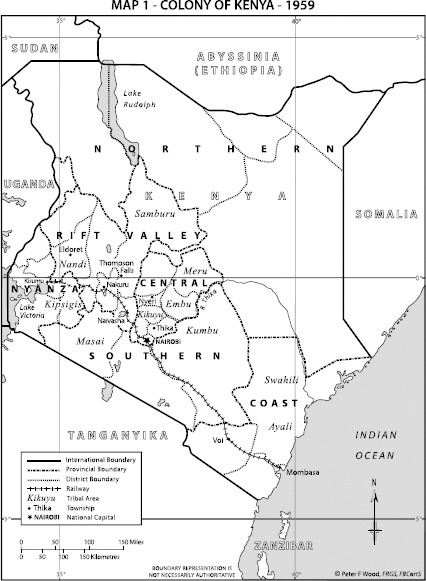
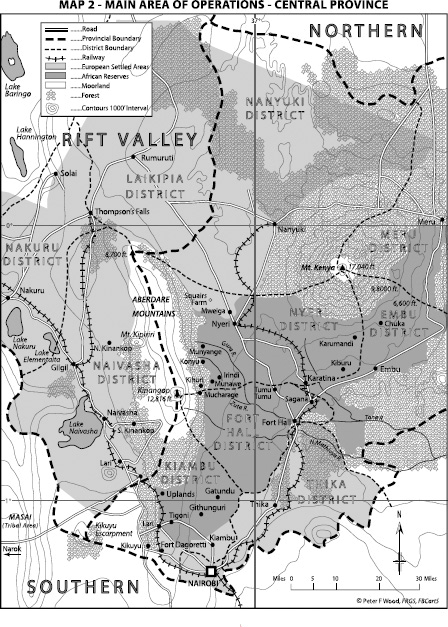
In 1846, two German missionaries, Johann Ludwig Krapf and Johannes Rebmann, exploring East Africa were staying with the Kamba people when they were told that a distant snow-capped mountain that looked like a Christmas pudding was known as K-Nya , seemingly because its volcanic rock and white snow resembled the feathers of the cock ostrich. Krapf recorded the African pronunciation as kenja . However, members of the Geographical Society of London did not believe that snow could fall so near the Equator and concluded that the sighting was the hallucination of malaria-stricken missionaries. Krapf had been sponsored by the Church Missionary Society of England; Rebmann later became the first European to see Mt Kilimanjaro.
Straddling the equator on Africas eastern coast, the 224,960 square miles of modern Kenya share borders with Sudan and Ethiopia to the north, Uganda to the west and Tanzania to the south. Coral reefs, sandy beaches, rocky inlets and muddy mangrove swamps protect the 250-mile coastal belt from the long rollers of the Indian Ocean. Geographically, the country can be split into highlands in the southwest filling a third of the country, and the remaining two thirds which are lowland. The massive volcanic fault stretching from the Jordan Valley south to Mozambique through Kenya is known as the Great Rift Valley and is fertile. The highlands are dominated by the 17,100ft Mt Kenya, the 13,000ft Aberdares Range to its west and the 10,000ft Mau Escarpment to the south. Overlooked by the Aberdares and spreading west to the 10,987ft Mt Kipipri is lush savannah. Lieutenant Colonel John Windeatt OBE, who commanded 1st Battalion Devonshire Regiment (1 Devons) between 1954 and 1955, describes the ecology of the mountains in his The Devonshire Regiment August 1945May 1958 :
Next pageFont size:
Interval:
Bookmark:
Similar books «Mau Mau Rebellion»
Look at similar books to Mau Mau Rebellion. We have selected literature similar in name and meaning in the hope of providing readers with more options to find new, interesting, not yet read works.
Discussion, reviews of the book Mau Mau Rebellion and just readers' own opinions. Leave your comments, write what you think about the work, its meaning or the main characters. Specify what exactly you liked and what you didn't like, and why you think so.

